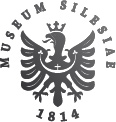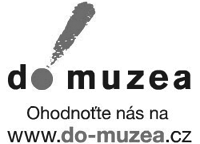Slezský sborník
rok 2010
ročník 108
číslo 3–4
Obsah / Contents
Studie / Articles (s. 167–278)
Martin Holý: Partikulární školství v Dolním Slezsku a nobilita z českých zemí v 16. a v prvních desetiletích 17. století
s. 167–186
Particular education in Lower Silesia and the nobility from the Bohemian Lands in the 16th and in the first decades of the 17th century
On the basis of source analysis of various characters the study deals with the role of Lower Silesia or more precisely local grammar schools in the educational process of the nobility from the Bohemian Lands at the beginning of the Modern era. It focuses mainly on the four renowned Latin schools, namely in Brieg (Brzeg), Beuthen a.O. (Bytom Odrzański), Goldberg (Złotoryja), and Breslau (Wrocław) at St. Elisabeth, that were ones of the most popular. It follows the motivation of the nobility when choosing a particular school, the content of both scholastic and extracurricular studies of noble boys, their lodging, board, and other aspects of their stay in these places. It also deals with the role of their studies in Lower Silesia within the scope of the whole process of education of the Bohemian and Moravian nobility, in which they mostly continued after leaving this region. Besides actual conclusions, the paper also suggests possibilities of further research.
Key Words: Bohemian and Moravian nobility, education, Lower Silesia, Latin schools
Jarosław Kuczer: An official or a satrap? Two faces of the starost in hereditary Silesian duchies (1629–1741)
s. 187–204
Správce nebo vladař? Dvě tváře úřadu zemského hejtmana ve slezských dědičných knížectvích (1629–1741)
In the period 1600–1720 the office of the sheriff (starost) in hereditary Silesian duchies remained a place where the influence of the estates and the king encountered. It is a fact that the sheriff office was established by the king; though a person of aristocratic origin, who shared the rights and privileges of their status, usually headed the institution. Although the Habsburgs preferred the rewarding principle of appointing their adherents into the office of a sheriff, we hesitate to exclude the other option, namely that the provincial offices of a sheriff were also used as instruments of subordination of influential rebellious opponents. It is also necessary to verify the way of viewing the fight for offices of a sheriff lead by the king and the estates. At the same time it seems that this conflict should be understood as usurpation from the aristocratic part. It was noblemen after all who tried not only to use their influence in appointing of this kingly institution but moreover to disable the appointing of persons inconvenient for them.
Key Words: Absolutism, aristocracy, gentry, Glogau, nobility, Oppeln-Ratibor, Schweidnitz-Jauer, Silesia, Silesian administration, Silesian starost (Landeshauptmann), 17th and 18th centuries
Petr Popelka: Sociální začleňování špičkových měšťanských podnikatelů éry průmyslové revoluce na příkladu moravské podnikatelské rodiny Kleinů
s. 205–234
Social integration of top-ranking middle-class entrepreneurs of the industrial revolution era on the example of the Moravian entrepreneur Klein family
The study deals with the process of social integration of entrepreneurs in the era of nascent civil society up to the First World War. On the example of four generations of the significant Moravian entrepreneur Klein family the author analyses the social origin of the family, the ability of its social mobility, and the process of social integration by means of a net of relational connections. The author wonders if we can talk about marriage policy in the case of Klein family, what type of life partners they looked for, what the role of godparents and best men was, to what extent they emphasised education, and to what extent the discovered tendencies concur with generally accepted idea of entrepreneurs in the 19th century.
Key Words: civil society, entrepreneur, industrial revolution, social integration, social origin, Wirtschaftsbürgertum, Bildungsbürgertum, Klein von Wisenberg
Martin Pelc: Turnerské hnutí v Rakouském Slezsku mezi liberalismem a nacionalismem (1880–1914)
s. 235–254
The turner movement in Austrian Silesia between liberalism and nationalism 1880–1914
Gymnastic clubs (Turnvereine) were among the most important promoters of chauvinistic nationalism and anti-Semitism in German regions of Central Europe. In the county Moravia-Silesia, a number of West-Silesian and West-Moravian gymnastic associations tried to establish nationalism and anti-Semitism as their official ideology. They were mainly opposed by liberal East-Silesian and South-Moravian clubs. The anti-Semite wing finally triumphed in 1899 when the Moravian-Silesian district congress in Opava voted for future implementation of the so called Aryan paragraph, driving the Jews out of German gymnastic organisations.
Key words: German gymnastic clubs, anti-Semitism, nationalism, Austrian-Silesia
Milan Myška: Hornicko-hutnický spolek v Moravské Ostravě
s. 255–272
Mining-metallurgic society in Moravská Ostrava
Besides self-government and free press, societies and their activities played a significant role in forming of modern civil society. Historians have paid considerable attention to societies and their activities in the Bohemian Lands in the second half of the 19th and at the beginning of the 20th century. Societies based on vocational principle stayed out of their interest, though. They associated citizens of the same or related professions, among them especially technical intelligentsia, namely on polytechnic principle (engineer societies and clubs) or on vocationally specialized principle (mining engineers, architects etc.). These societies pursued general duties common to society activities on one hand, and played a significant role in improving the professionalization process, internal integration of the social-vocational group, and particularly promoting social prestige of the vocational status on the other hand. These activities are noticeable specifically in the case of academically educated technical intelligentsia fighting for emancipation with the academically educated humanistic intelligentsia (doctors, lawyers etc.). The presented publication deals with the formation, progression, and social function of the Mining-metallurgic society in Moravská Ostrava, founded in 1873, which played a significant role in this emancipation process in the industrial area in Ostrava.
Key Words: civil society, self-government, professionalization, societies, mining and metallurgy, coal mining district Ostrava
MATERIÁLY / MATERIALS (s. 273–278)
Adrien Quéret-Podesta: The influence of the so-called Hungarian-Polish Chronicle on the Silesian medieval chronicles
s. 273–278
Vliv tzv. Uhersko-polské kroniky na slezské středověké kronikářství
The present communication will study the question of the reception of the so-called Hungarian-Polish Chronicle in the chronicles produced in Silesia under the rule of Piast dukes. The question of the influence of this text has been indeed well studied for the cases of annalistic sources, especially in the case of the production from Lesser Poland, but also for the Silesian one. If we except the monumental work of the XVth century Polish chronicler Jan Długosz, the influence of this source on medieval chronicles has been somewhat less examined. We will then firstly study the Polish-Silesian Chronicle, which was written in the late thirteenth century, and then we will analyze the Chronicle of Polish Princes, which was composed approximately one century later. In both sources, we will of course aim to spot the elements coming from the Hungarian-Polish Chronicle, but we will also try to discover the reasons of their presence in our texts, and we will as well endeavor to determine the process of transmission of these elements from the Hungarian-Polish Chronicle to the Silesian medieval chronicles.
Key Words: Medieval historiography, Hungarian-Polish Chronicle, Medieval Silesia, Piast dynasty
Recenze / Reviews (s. 279–284)
Zprávy o literatuře / Brief Notices (s. 285–302)
Kronika / Chronicle (s. 303–315)
Bibliografická příloha / Bibliography (s. 316–317)
Poslední aktualizace článku: 06.10.2015
Vytisknout celý článek







